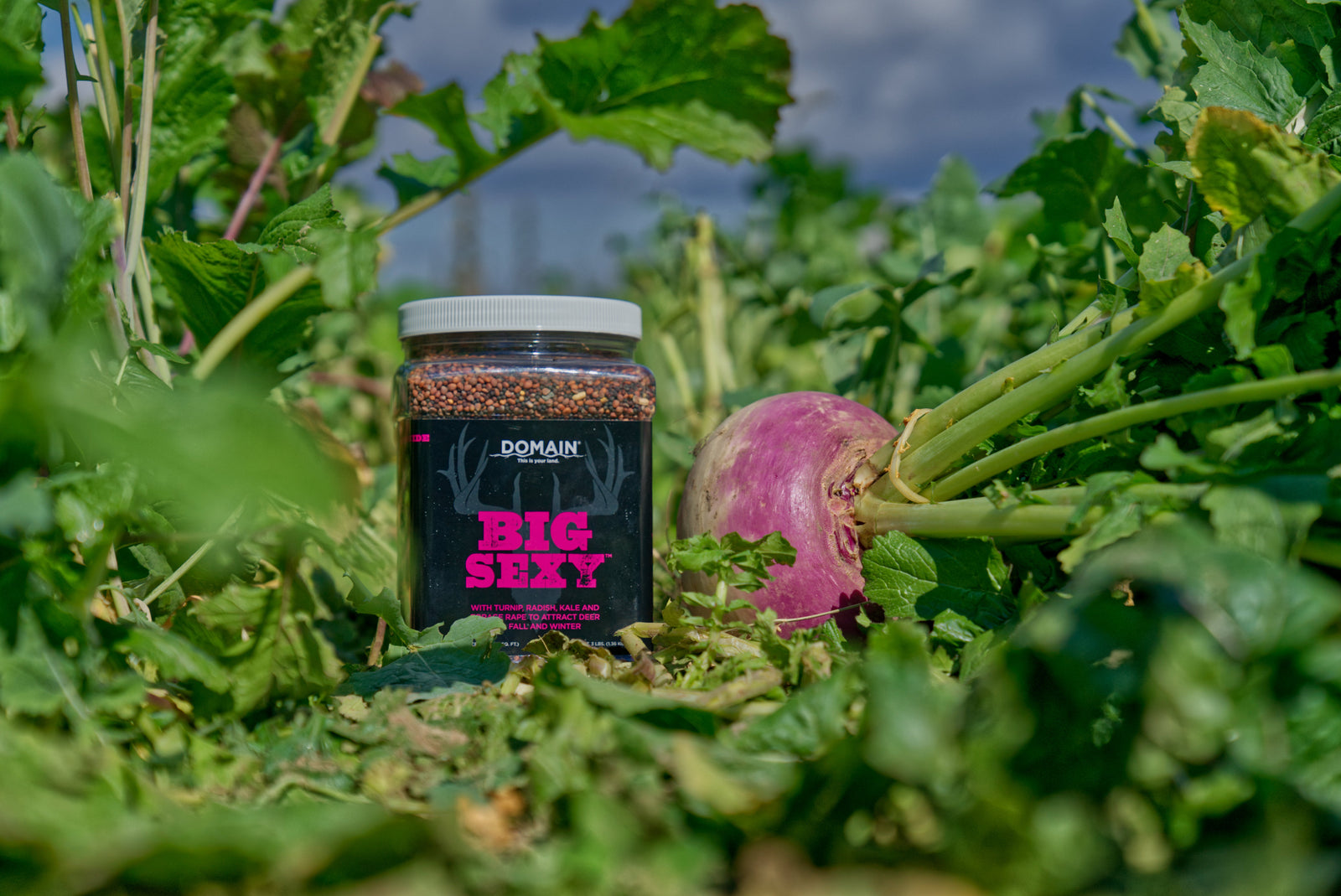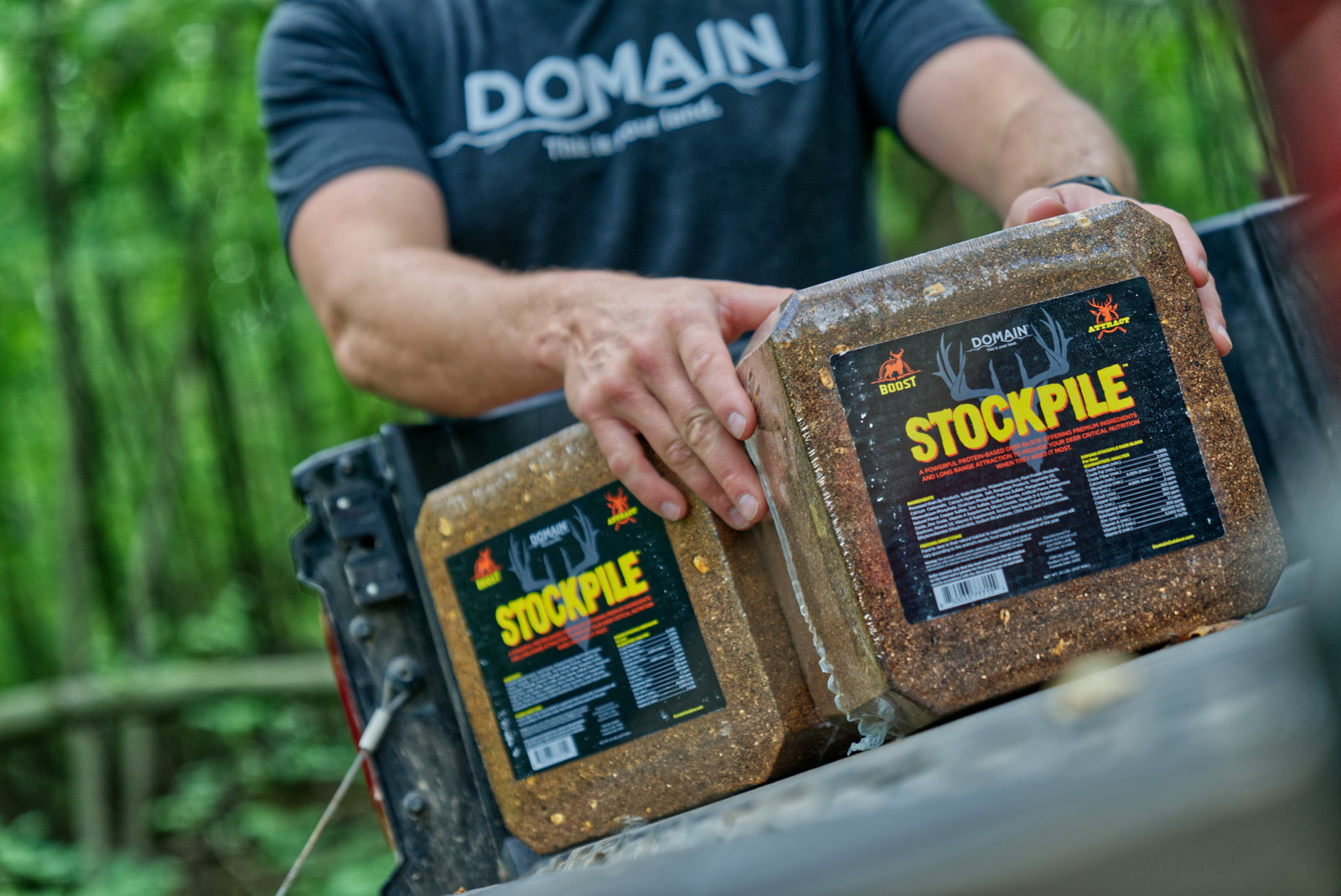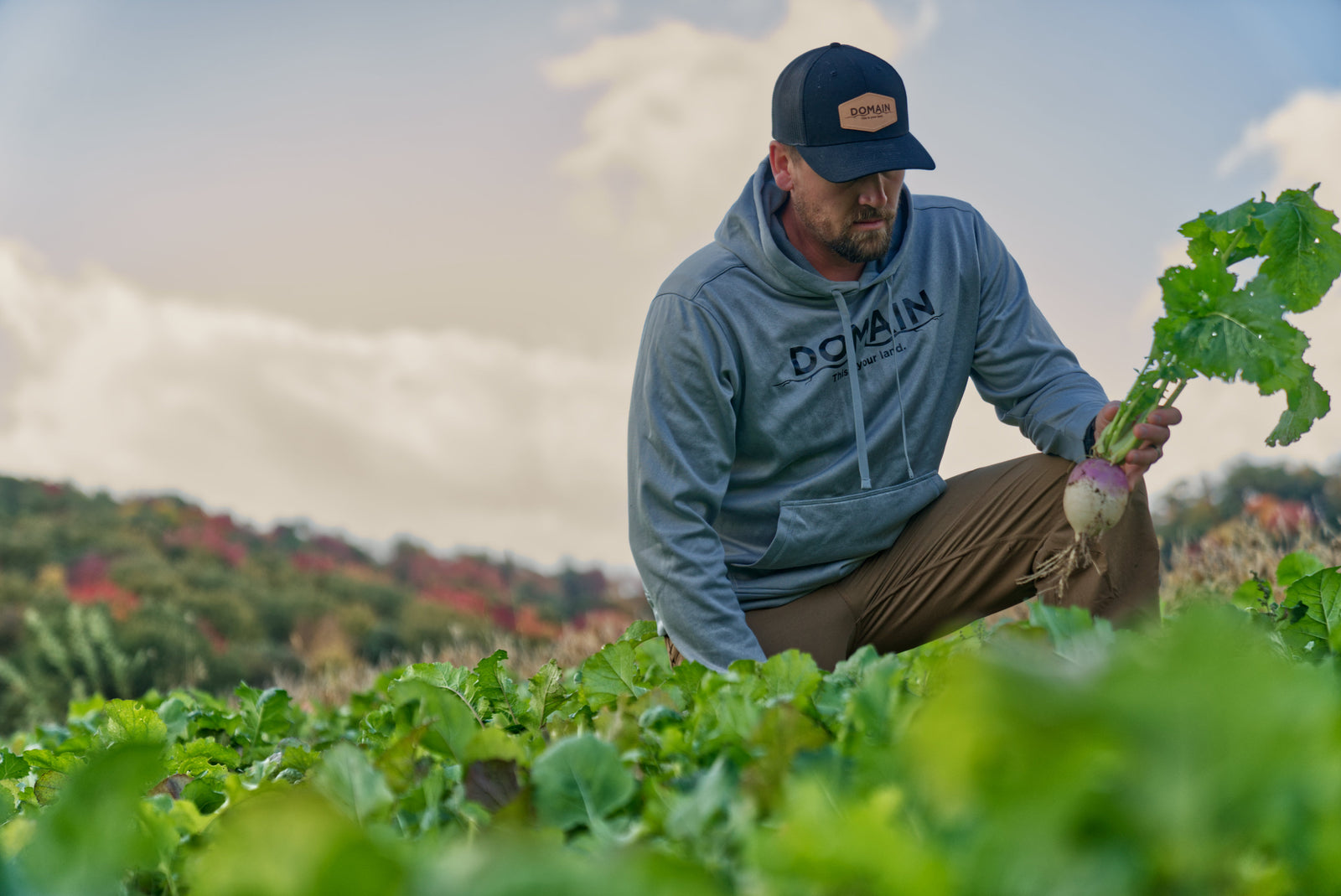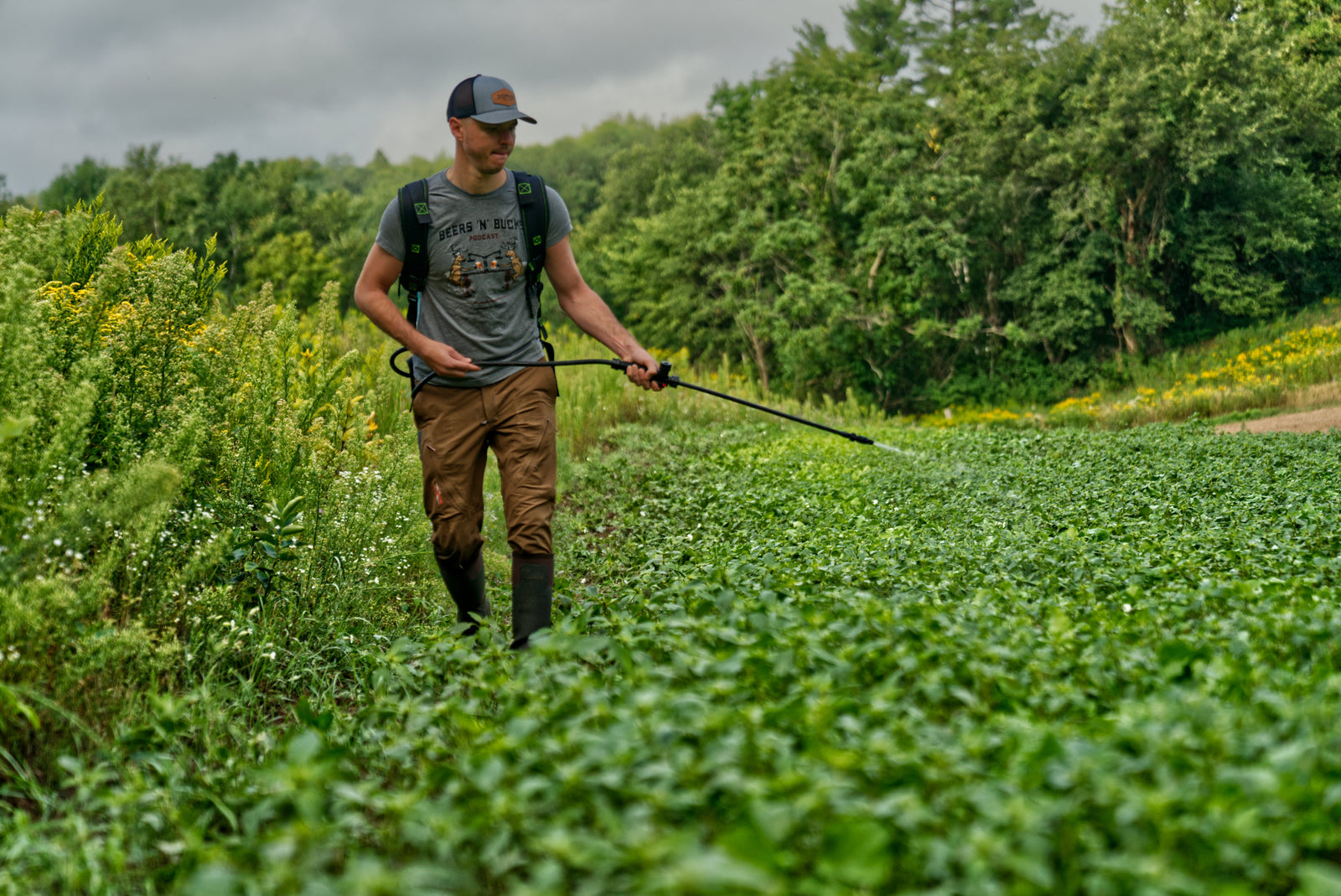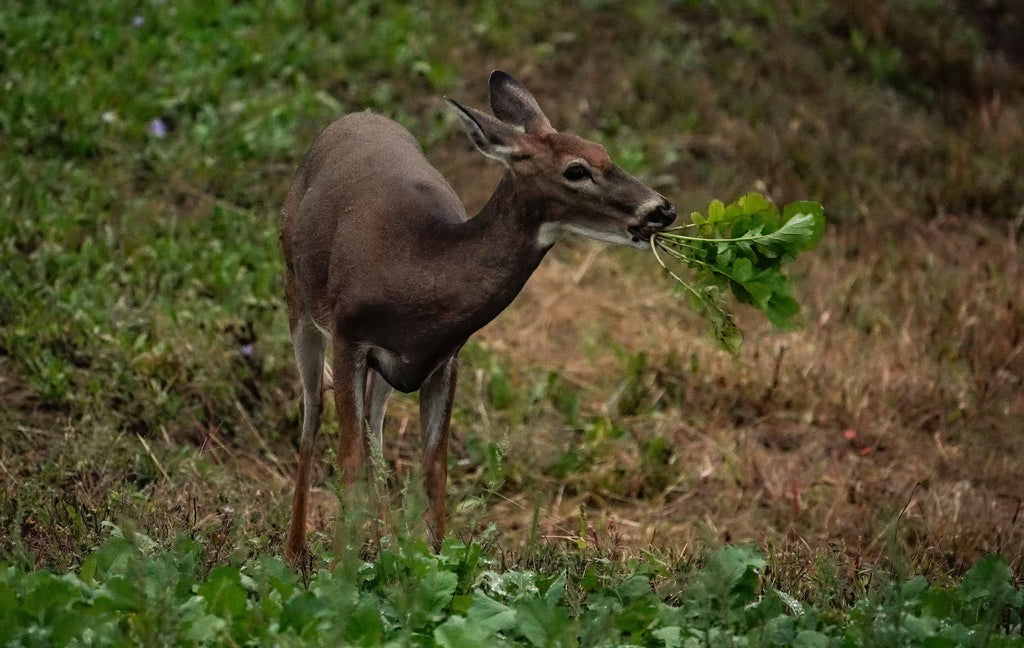When it comes to planting a food plot for whitetail deer, selecting the right seed mix is crucial for long-term success. With so many options available, it’s important to consider factors such as soil conditions, fertilizer needs, and your overall goals for the plot. Here’s a step-by-step guide to help you make the best choice for your land.
Step 1: Know Your Soil pH and Fertilizer Needs
Before choosing a seed mix, test your soil’s pH levels. Most food plot plants thrive in a pH range of 6.0-7.0, but many soils fall below this mark. If your soil is too acidic, consider usingElbow Grease from Domain Outdoor to help increase the pH and create a more hospitable environment for your plants.
Understanding your soil’s nutrient levels is equally important. Fertilizer bags display three numbers, known as the N-P-K ratio:
-
N (Nitrogen): Encourages leafy growth and is essential for plants like clover and brassicas.
-
P (Phosphorus): Aids in root development and flowering, making it important for seeds to establish properly.
-
K (Potassium): Supports plant health and resistance to environmental stress.
To ensure your food plot gets the nutrients it needs, considerFreight Train andCrank’d from Domain Outdoor. These liquid fertilizers provide essential nutrients to optimize plant growth and soil health.
Step 2: Identify Your Soil Type
Not all food plot seeds grow well in every type of soil. Understanding your soil composition can help you choose the right mix:
-
Sandy Soil: Drains quickly and can struggle to retain nutrients. Ideal for deep-rooted plants like chicory and clover.
-
Wet Soil: Holds moisture and can be prone to standing water. Consider flood-tolerant crops like alsike clover or certain cereal grains.
-
Clay Soil: Can be dense and slow-draining, making it difficult for some plants to establish. Brassicas and legumes tend to perform well in these conditions.
Step 3: Determine Your Food Plot Goals
Ask yourself what you want to achieve with your food plot:
-
Year-Round Nutrition: If you want to provide food for deer throughout all seasons, opt for a mix that includes perennials like clover and alfalfa, as well as annuals such as brassicas and cereal grains.
-
Fall Hunting Attraction: If your main focus is drawing deer in for hunting season, go with high-attraction annuals like brassicas, turnips, radishes, and winter wheat.
Step 4: Choose Between Annuals and Perennials
-
Annual Food Plots: These need to be replanted each year but provide a high volume of forage. Ideal for fall attraction and winter nutrition.
-
Perennial Food Plots: These plots come back year after year with proper maintenance. Clover and chicory are popular options that provide year-round food for deer.
Step 5: Use the Domain Outdoor Food Plot Selector
Still unsure about which seed mix is best for your property?Domain Outdoor’s Food Plot Selector is a great tool to narrow down your choices based on your specific conditions and goals.Check it out here.
Final Thoughts
Selecting the right food plot seed mix requires careful planning and consideration of soil conditions, fertilization, and your overall goals. By testing your soil, choosing the right fertilizer, and understanding your land, you can create a thriving food plot that attracts and nourishes deer year-round. Happy planting and good luck this season!

